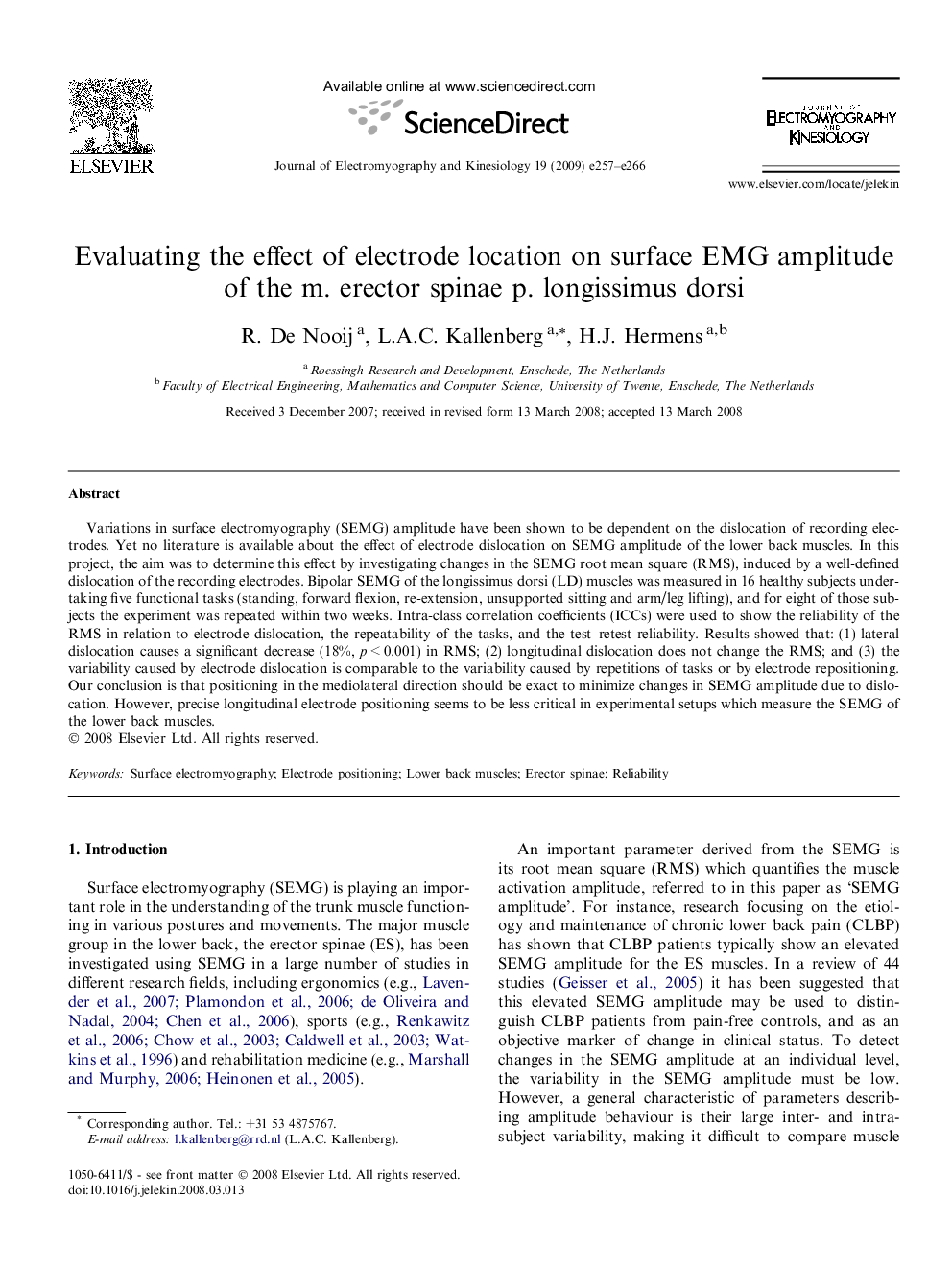| Article ID | Journal | Published Year | Pages | File Type |
|---|---|---|---|---|
| 4065467 | Journal of Electromyography and Kinesiology | 2009 | 10 Pages |
Variations in surface electromyography (SEMG) amplitude have been shown to be dependent on the dislocation of recording electrodes. Yet no literature is available about the effect of electrode dislocation on SEMG amplitude of the lower back muscles. In this project, the aim was to determine this effect by investigating changes in the SEMG root mean square (RMS), induced by a well-defined dislocation of the recording electrodes. Bipolar SEMG of the longissimus dorsi (LD) muscles was measured in 16 healthy subjects undertaking five functional tasks (standing, forward flexion, re-extension, unsupported sitting and arm/leg lifting), and for eight of those subjects the experiment was repeated within two weeks. Intra-class correlation coefficients (ICCs) were used to show the reliability of the RMS in relation to electrode dislocation, the repeatability of the tasks, and the test–retest reliability. Results showed that: (1) lateral dislocation causes a significant decrease (18%, p < 0.001) in RMS; (2) longitudinal dislocation does not change the RMS; and (3) the variability caused by electrode dislocation is comparable to the variability caused by repetitions of tasks or by electrode repositioning. Our conclusion is that positioning in the mediolateral direction should be exact to minimize changes in SEMG amplitude due to dislocation. However, precise longitudinal electrode positioning seems to be less critical in experimental setups which measure the SEMG of the lower back muscles.
